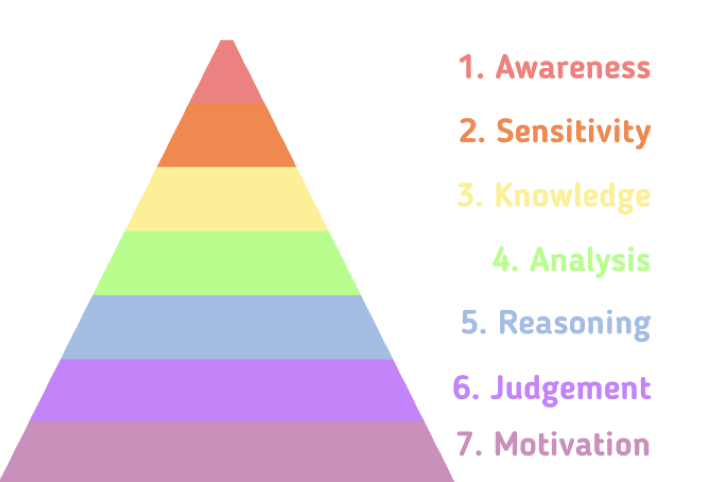This Explorer was built to help you navigate the landscape of engineering ethics education. Choose a path depending on what you want to do: each path leads you through content such as learning outcomes, graduate attributes, and accreditation criteria, while also pointing you to supporting activities and resources linked to the content. Find your way using the map at top right or by navigating to the links in the menu bar.
These learning outcomes were developed by the Engineering Ethics Toolkit Advisory Group through the process of researching the Toolkit’s case studies. They correspond to Ethics Graduate Attributes which are based on a learning taxonomy that can be used to plan ethics teaching across an entire engineering programme or curriculum. These outcomes are also linked to case studies and case enhancements found in the Toolkit.
Engineering Ethics Learning Outcomes are WHAT learners should be able to do after engaging with engineering ethics activities and resources. These outcomes are written so that they can be assessable, and so that they can be applied to or integrated within existing assessments.
They are intended as suggestions and may be revised to fit specific institutional, programmatic, or departmental contexts since there are multiple ways and places to integrate ethics into engineering teaching.
Click on each outcome to see how it is aligned to AHEP criteria.

The colours used here across the learning outcomes and their associated ideas are based on Bloom’s taxonomy, a system developed to provide a common language for teachers to discuss and exchange learning and assessment methods. Educators use Bloom’s taxonomy to encourage higher-order thought in their students by building up from lower-level cognitive skills.
The traditional version of Bloom’s taxonomy uses six colours and tiers; we have added one more to include motivation.